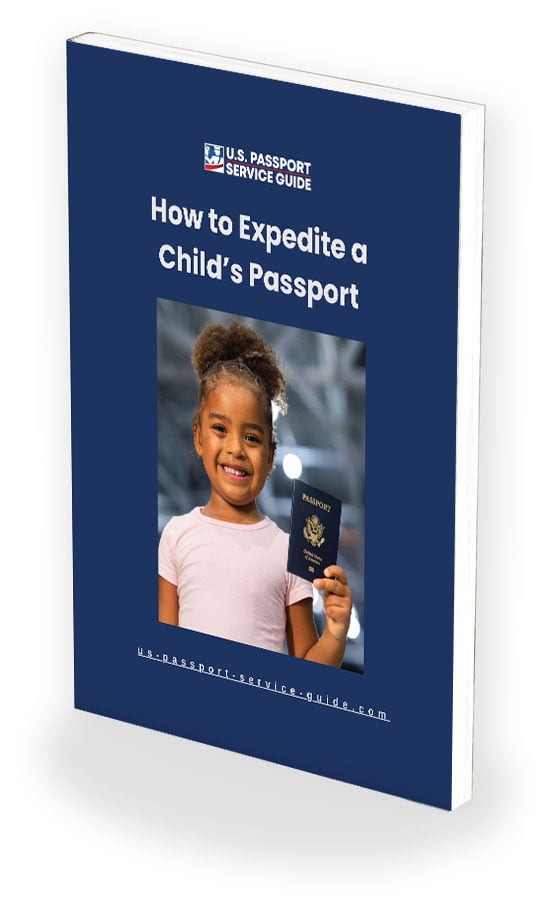Has your U.S. passport expired? Are you wondering what to do with it? An expired passport might seem useless, but it’s far from it! This document, even past its validity, holds more value than you might think.
From serving as a personal identification tool to acting as a historical record of your globe-trotting adventures, your old passport is a treasure trove of potential uses.
Valid Uses for Invalid Passports
An expired passport might appear to have lost its purpose. However, this is far from the truth! Despite no longer being valid for travel, this document carries a wealth of value and potential uses.
1. Proof of Identity
Even though it’s expired or has been replaced, your old passport can still serve as a valid form of personal identification. An expired passport still contains your photo and personal details such as your full name, date of birth, and nationality. These details were verified by your government at the time your passport was issued, making it a reliable form of personal identification.
However, it is important to note that some organizations may not accept an expired passport for certain transactions or identity verifications. Notably, you cannot use an expired passport to board a plane.
2. Proof of Citizenship
In some cases, an expired passport can be used as proof of citizenship, as it was verified by the United States of America at the time that it was issued. Your passport shows that you were recognized as a U.S. citizen. Therefore, even if it’s expired, it can still be used as proof of citizenship in many situations. However, some organizations or institutions may require a valid passport or other forms of proof.
3. A Valid Travel Visa
If your old passport has a valid travel visa, you might need to carry it along with your new passport when you travel. For instance, some countries allow travelers to enter if they carry both their new passport and their old passport with a valid tourist visa.
However, the rules can vary by country, so it’s important to check with the embassy or consulate of your destination country before you travel abroad. In some cases, you will need to get a new visa in a valid passport.
- For a look at country-specific travel visa information, visit our country-by-county guide to visa requirements and choose your destination country.
4. A Historical Record
Your old passport serves as a record of your travels, as it contains all the visas and stamps from your previous trips. These serve as a record of the places you’ve visited and the dates of your travels. This can be useful for personal record-keeping, and in some cases, these past travel records may be required for immigration or visa applications. For example, many countries in the Middle East prohibit entry for travelers coming from or passing through certain locations.
5. U.S. Passport Renewal
When you’re applying for a U.S. passport renewal, you are typically required to submit your old passport as part of the U.S. passport renewal application process. This allows the passport office to cancel your old passport and issue a new one.
After the renewal process, your old passport is usually returned to you, although it will be invalidated.
For more, follow our step-by-step guide to renewing your US passport.
Check Your Passport’s Validity
Planning ahead is key when it comes to passport renewal. We highly recommend that you aim to renew your passport at least 9 months before its expiration date. This is due to 2 main factors:
- Unpredictable Processing Times: A sudden increase in demand or unforeseen circumstances can cause delays in passport processing.
Currently, routine passport applications are taking 6 to 8 weeks to process, and expedited processing is taking 2 to 3 weeks.
For more information on current passport processing times, check out How Long Does It Take to Get a Passport? - Travel Restrictions: Many countries enforce a 6-month validity rule, denying entry to travelers whose passports would expire within 6 months. Some countries require only 3 months of validity, while others simply require a valid passport for the duration of your stay.
Remember, you can’t travel internationally until your renewed passport arrives. While you can renew your passport anytime while it’s valid and up to 5 years after it expires, any remaining validity won’t carry over to your new passport. To ensure uninterrupted international travel, it’s safest to renew your passport 9-12 months before it expires.
Renewing Your US Passport
Before applying for a US passport renewal, you must first confirm that you are eligible for a US passport renewal. Once you’ve confirmed your eligibility, you must follow the proper steps for passport renewal.
Routine Passport Renewal – 6 to 8 weeks
- Complete Form DS-82: Application for a U.S. Passport by Mail.
- Download, print, and sign the passport renewal form.
- Have a current passport photo taken.
- Calculate the passport renewal fee.
- Place signed Form DS-82, most recent passport photo, previously-issued passport, and fee in an envelope.
- Include a legal name change document, if applicable.
- Mail the envelope to the appropriate address on the application form
Standard Service (If you live in CA, FL, IL, MN, NY, or TX):
National Passport Processing Center
Post Office Box 640155
Irving, TX 75064-0155
Standard Service (If you live in any other state or Canada):
National Passport Processing Center
Post Office Box 90155
Philadelphia, PA 19190-0155
For a more detailed step on routine passport renewal, please see our Ultimate U.S. Passport Renewal Guide: Forms, Fees, Photos, & Steps.
Expedited Passport Renewal: 2 Options – 2 to 3 weeks
- Complete Form DS-82.
- Double-check that it is signed.
- Place the completed application, a current passport photo, and payment for fees in a protective envelope.
Option 1: Applying for an expedited passport renewal by mail:
- Address the envelope to the Department of State using the following address:
National Passport Processing Center
Post Office Box 90955
Philadelphia, PA 19190-0955
Note: The address above is the only one that accepts expedited renewals by mail.
- Write the word “EXPEDITE” on the outside of the envelope.
- Mail the envelope and its contents to the address above. Opt for overnight express to get the fastest service.
Option 2: Applying for an expedited passport renewal at a regional passport agency:
- Schedule an appointment at your nearest regional passport agency or call the National Passport Information Center at 1-877-487-2778.
- Visit the agency. Arrive early with steps 1 through 3 already completed. For tips for a successful visit, see our guide How to Apply for Expedited Service at a Regional Passport Agency.
If you applied via mail or at a Regional Agency: Utilize the U.S. State Department’s online passport status system to check your application’s progress. To use this tool, you’ll need your last name, date of birth, and the last four digits of your Social Security number.
Expedited Passport Renewal Using a Registered Passport Expeditor – 24 hours to 2 weeks
- Find a reputable passport expediting service. For more on this, check out our guide, 5 Criteria for Choosing the Best Passport Expediting Service.
- Complete Form DS-82.
- Double-check that it is signed.
- Place the completed application and a current passport photo in a secure envelope.
- Get your documents to the expediter.
- Wait for the expeditor to return your renewed passport and travel documents. For more information on this, see our Ultimate U.S. Traveler’s Guide to Passport Expediters.
Need your passport renewal sooner? You can get your US passport renewed in as little as 24 to 48 hours using a trusted expedited passport courier service like RushMyPassport.
Securely Disposing of Your Old U.S. Passport
Once you’ve been issued your renewed, valid US passport, you might consider discarding the old one. However, it’s crucial to remember that your passport holds sensitive personal information. To prevent unauthorized access or potential identity theft, it’s important to follow the correct disposal procedures.
Keep in mind that all U.S. passports issued since 2007 are embedded with a microchip containing your personal data. This makes it nearly impossible to completely destroy a U.S. passport issued after 2006. Furthermore, tampering with the passport microchip is against the law. Therefore, if your old U.S. passport was issued:
- Before 2007, it is recommended to physically destroy your old, invalid U.S. passport to prevent misuse of your information.
- After 2006, it is recommended to keep your old, invalid U.S. passport in a safe, secure location with the rest of your personal documents.
If your old passport was issued before 2007, here are some steps you can follow to securely dispose of your passport:
- Remove the Biometric Page. The biometric page of your passport contains most of your personal information. You can start by cutting out this page with scissors.
- Shred the Passport. Use a shredder, shredding scissors, or a pair of large scissors to destroy the biometric page and the rest of the passport pages one by one to be sure that all of your personal is entirely illegible.
- Check the Shredded Material. Open the shredder’s paper basket or check the pile of cuttings and make sure that the passport pages have been shredded beyond recognition.
- Dispose of the Shredded Material. Securely dispose of the shredded material. You can consider disposing of the shreds in separate containers or by safely burning them for added security.
An expired passport is far from being a redundant document. It’s a versatile tool that can serve multiple purposes, from identity verification to a travel document. It’s also a crucial component in the passport renewal process. Before you consider discarding your invalidated passport, remember the potential uses it holds.
If you decide to dispose of it, ensure it’s done securely to prevent any misuse of your personal information. An old passport, like a good book, might have ended its primary purpose, but the story it holds within is far from over.








